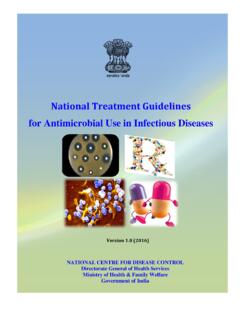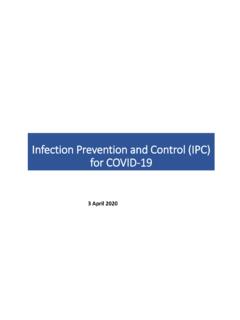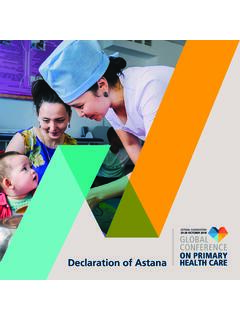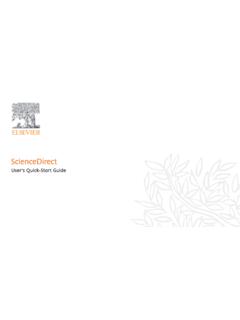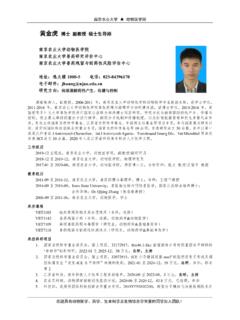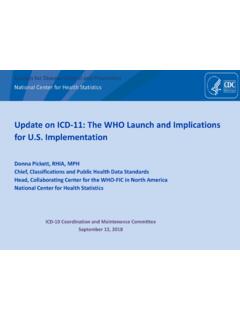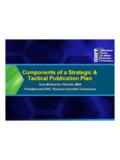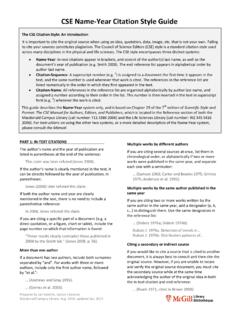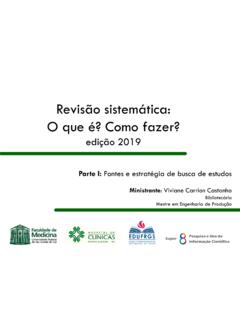Transcription of National Action Plan on Antimicrobial Resistance
1 National Action Plan on Antimicrobial Resistance (NAP-AMR) 2017 2021. April 2017 | India Government of India, April 2017. National Action Plan on Antimicrobial Resistance | India Contents Abbreviations and acronyms ..2. Executive summary .. 4. 1. Background ..6. Introduction .. 7. AMR and its containment in India ..8. AMR in man and animals ..8. Awareness and understanding of AMR .. 10. Surveillance of AMR .. 11. Infection prevention and control .. 13. Use of 14. Research and innovations .. 15. National response .. 16. 2. Developing the National Action Plan on AMR .. 17. 3. National Action Plan on Antimicrobial 19. Goal .. 19. Objectives .. 19. Strategic priorities .. 19. National Action Plan on AMR interventions, activities and outputs.
2 22. Monitoring and evaluation 45. References .. 47. Annex 1: Governance committees/groups for AMR .. 48. Annex 2: Operational plan and budget (template).. 52. 1. National Action Plan on Antimicrobial Resistance | India Abbreviations and acronyms AMR Antimicrobial Resistance ARB antibiotic Resistance breakers BIS Bureau of Indian Standards CDSCO Central Drugs Standard Control Organization CHEB Central Health Education Bureau CPCB Central Pollution Control Board CSE Centre for Science and Environment CSIR Council of Scientific & Industrial Research CTD Central TB Division CWG-AMR Core Working Group on AMR. DADF Department of Animal Husbandry Dairying and Fisheries DBT Department of Biotechnology DCGI Drug Controller General of India DCI Dental Council of India DoP Department of Pharmaceuticals ESBL extended spectrum beta-lactamase FAO Food and Agriculture Organization of the United Nations FSSAI Food Safety and Standards Authority of India GAP-AMR global Action Plan on Antimicrobial Resistance GHSA global Health Security Agenda HAI healthcare associated infections HICC hospital infection control committee ICC-AMR Intersectoral Coordination Committee on AMR.
3 ICAR Indian Council for Agricultural Research ICMR Indian Council for Medical Research IDSP Integrated Disease Surveillance Programme IMA Indian Medical Association INC Indian Nursing Council IPC Infection Prevention and Control KAP knowledge, attitude and practices KVK Krishi Vigyan Kendra MCI Medical Council of India MoAFW Ministry of Agriculture and Farmers Welfare 2. National Action Plan on Antimicrobial Resistance | India MoAYUSH Ministry of Ayurveda, Yoga and Naturopathy, Unani, Siddha and Homeopathy MoCAFPD Ministry of Consumer Affairs, Food and Public Distribution MoCF Ministry of Chemicals and Fertilizers MoDWS Ministry of Drinking Water and Sanitation MoEA Ministry of External Affairs MoEFCC Ministry of Environment.
4 Forest and Climate Change MoF Ministry of Finance MoFPI Ministry of Food Processing Industries MoHFW Ministry of Health & Family Welfare MoHRD Ministry of Human Resource Development MoIB Ministry of Information & Broadcasting MoST Ministry of Science & Technology MRSA methicillin resistant Staphylococcus aureus NAP-AMR National Action Plan on Antimicrobial Resistance NACO National AIDS Control Organization NBE National Board of Examinations NCDC National Centre for Disease Control NHM National Health Mission NIB National Institute of Biologicals NIPER National Institute of Pharmaceutical Education and Research NLEP National Leprosy Eradication Programme NVBDCP National Vector Borne Disease Control Programme OIE World Organisation for Animal Health (Office International des Epizooties).
5 OPPI Organisation of Pharmaceutical Producers of India PCI Pharmacy Council of India PHFI Public Health Foundation of India RNTCP Revised National Tuberculosis Control Programme SPCB State Pollution Control Board TAG-AMR Technical Advisory Group on AMR. UNEP United Nations Environment Programme UNICEF United Nations Children's Fund VCI Veterinary Council of India WHA World Health Assembly WHO World Health Organization 3. National Action Plan on Antimicrobial Resistance | India Executive summary The threat posed by Antimicrobial Resistance (AMR) to public health as well as global health security has been reiterated in numerous World Health Assembly (WHA) resolutions. AMR is also prioritized under the global Health Security Agenda (GHSA), and India is one of the contributing countries.
6 The Ministry of Health & Family Welfare (MoHFW) identified AMR. as one of the top 10 priorities for the ministry's collaborative work with WHO. The National Health Policy 2017 identifies Antimicrobial Resistance as a problem and calls for effective Action to address it. An international conference on AMR Combating Antimicrobial Resistance : A. Public Health Challenge and Priority , was jointly organized by the Government of India and World Health Organization (WHO) in February 2016, which was attended by more than 350. participants. The Hon'ble Prime Minister, Shri Narendra Modi, and the Hon'ble Union Minister for Health, Shri Nadda have reiterated government's commitment to tackle AMR.
7 In May 2015, the sixty-eighth World Health Assembly endorsed the global Action Plan on Antimicrobial Resistance (GAP-AMR) including antibiotic Resistance , the most urgent drug Resistance trend. The WHA resolution urges Member States to align their National Action Plan on AMR with GAP-AMR by May 2017. Commitment by global leaders to combat AMR was further strengthened at the High Level Meeting on AMR at the United Nations General Assembly on 21 September 2016. The Ministry of Health & Family Welfare notified three governance mechanisms in September 2016 to address this challenge. These include the Intersectoral Coordination Committee, Technical Advisory Group and Core Working Group on AMR for technical coordination and oversight.
8 The Core Working Group has been activated and has drafted the National Action Plan on Antimicrobial Resistance (NAP-AMR), which was further reviewed at the National Workshop on Development of National Action Plan on AMR that included members from Core Working Group and the Technical Advisory Group. The strategic objectives of NAP-AMR are aligned with the global Action plan based on National needs and priorities, and in addition to the 5 priorities of GAP-AMR, India has a sixth priority that is India-specific dealing with India's leadership on AMR including international, National and sub- National collaborations on AMR. Six strategic priorities have been identified under the NAP-AMR (i) improving awareness and understanding of AMR through effective 4.
9 National Action Plan on Antimicrobial Resistance | India communication, education and training; (ii) strengthening knowledge and evidence through surveillance; (iii) reducing the incidence of infection through effective infection prevention and control; (iv) optimizing the use of Antimicrobial agents in health, animals and food; (v) promoting investments for AMR activities, research and innovations; and (vi) strengthening India's leadership on AMR. Strategic priority 1 focuses on improving awareness and understanding of AMR through effective communication, education and training, and has 2 focus areas first is communications and information, education, communication (IEC) resources to raise awareness amongst all stakeholders, and second focus area is education and training to improve the knowledge and behaviour of professionals in all sectors.
10 Strategic priority 2 aims to strengthen knowledge and evidence through surveillance of AMR, with 2 focus areas strengthening laboratories in human, animal, food and environment sectors, as well as ensuring surveillance of Antimicrobial Resistance in human, animal, food and environment sectors. Strategic priority 3 attempts to reduce the incidence of infection through effective infection prevention and control in healthcare to reduce the burden of infection, in animal health and food to reduce spread of AMR and antimicrobials through animals and food, and in community and environment to reduce the spread of AMR and antimicrobials in the environment. Strategic priority 4 shall optimize the use of Antimicrobial agents in health, animals and food through strengthening regulations, ensuring access and surveillance of Antimicrobial use, Antimicrobial stewardship in healthcare as well as animal health and agriculture.
